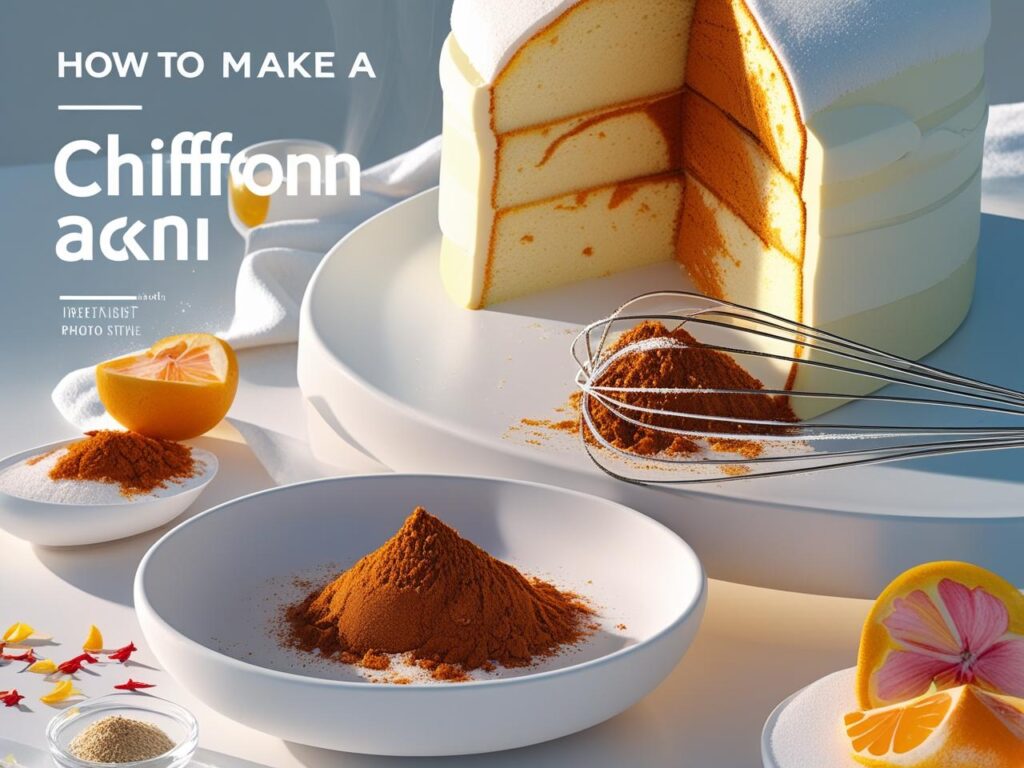Baking a chiffon cake might seem intimidating at first, but once you master the basics, you’ll find it’s one of the easiest and most rewarding cakes to make at home. If you’ve ever struggled with dense or dry cakes, this guide will show you exactly how to bake a light and airy chiffon cake that melts in your mouth every time. Whether you’re a beginner or a seasoned baker looking for a classic chiffon cake recipe, you’re in the right place.
In this article, we’ll walk through an easy chiffon cake recipe, share tips for the moistest results, and explore why homemade chiffon cakes are worth every minute spent in the kitchen.
Why Choose a Chiffon Cake?
Chiffon cake stands out for its unique texture — it’s incredibly light, fluffy, and moist without being greasy. Thanks to its combination of oil and whipped egg whites, chiffon cakes have a delicate crumb that’s perfect for celebrations, afternoon teas, or just a sweet treat to brighten your day.
Benefits of Chiffon Cake:
- Light and airy texture: Unlike butter-heavy cakes, chiffon uses oil, which keeps the crumb tender.
- Moist but not dense: The whipped egg whites introduce air, making it soft and fluffy.
- Versatile flavor base: You can customize it with citrus, vanilla, or even chocolate.
- Perfect for layering or glazing: Its stable structure holds up well for decorations.
Easy Step-by-Step Guide to Make a Classic Chiffon Cake
Ingredients
- 2 ¼ cups cake flour
- 1 ½ cups granulated sugar (divided)
- 1 tablespoon baking powder
- ½ teaspoon salt
- 7 large eggs, separated
- ¾ cup vegetable oil
- ¾ cup water
- 2 teaspoons vanilla extract
- ¼ teaspoon cream of tartar
Instructions
- Prepare your pan: Do not grease the chiffon cake pan. The cake needs to cling to the sides to rise properly.
- Mix dry ingredients: Sift together cake flour, 1 cup sugar, baking powder, and salt in a large bowl.
- Combine wet ingredients: In another bowl, whisk egg yolks, oil, water, and vanilla extract until smooth.
- Make batter: Gradually add wet ingredients to the dry ingredients, mixing until just combined.
- Beat egg whites: Using an electric mixer, beat egg whites with cream of tartar until soft peaks form. Gradually add remaining ½ cup sugar, beating until stiff peaks form.
- Fold whites into batter: Gently fold the egg whites into the batter in three additions, taking care not to deflate the mixture.
- Bake: Pour batter into an ungreased chiffon cake pan. Bake at 325°F (165°C) for 55-60 minutes, or until a toothpick inserted comes out clean.
- Cool upside down: Invert the pan immediately and let the cake cool completely upside down to maintain volume.
- Remove from pan: Once cooled, run a knife around the edges to loosen and carefully remove the cake.

Table: Top 5 Tips for Baking the Perfect Chiffon Cake
| Tip Number | Tip Description | Reason/Benefit |
|---|---|---|
| 1 | Use room temperature eggs | Helps with better emulsification |
| 2 | Do not grease the pan | Allows cake to rise and cling properly |
| 3 | Fold egg whites gently | Maintains airiness and fluffiness |
| 4 | Bake at a consistent moderate temp | Prevents cracking or sinking |
| 5 | Cool cake upside down | Keeps structure and height intact |
Expert Insights and Baking Tips
Pastry chefs agree that the key to a successful chiffon cake lies in the egg whites. “Whipping egg whites properly and folding them gently is the difference between a dense cake and a perfectly airy chiffon,” says baking expert Lisa Martinez. Also, avoid overmixing the batter after adding egg whites — this will deflate the air pockets, resulting in a heavier cake.
FAQs About How to Make a Chiffon Cake
Q1: What makes chiffon cake different from sponge cake?
Chiffon cake uses oil and whipped egg whites, giving it a moister and more tender crumb compared to the dry, egg-only sponge cake.
Q2: Can I use all-purpose flour instead of cake flour?
You can, but cake flour produces a lighter, finer texture. If using all-purpose flour, sift it well and consider removing a bit of the flour to replace with cornstarch.
Q3: Is chiffon cake safe to eat with raw eggs?
The eggs are fully baked in the cake, making it safe to eat. However, always use fresh, high-quality eggs.
Q4: How do I store chiffon cake?
Store it in an airtight container at room temperature for up to 2 days, or refrigerate for up to 5 days.
Q5: Can I freeze chiffon cake?
Yes! Wrap the cake tightly in plastic wrap and foil, then freeze. Thaw in the fridge before serving.
Conclusion
Now that you have the ultimate guide to making a chiffon cake, it’s time to get baking! This moist, light, and fluffy cake will surely become a favorite in your home. Feel free to share your baking stories or ask questions in the comments below — I’d love to hear how your chiffon cake turns out!
If you want, I can also help you create Pinterest pins, SEO descriptions, or more baking recipes. Just let me know!
Do you like this personality?




Leave a Reply